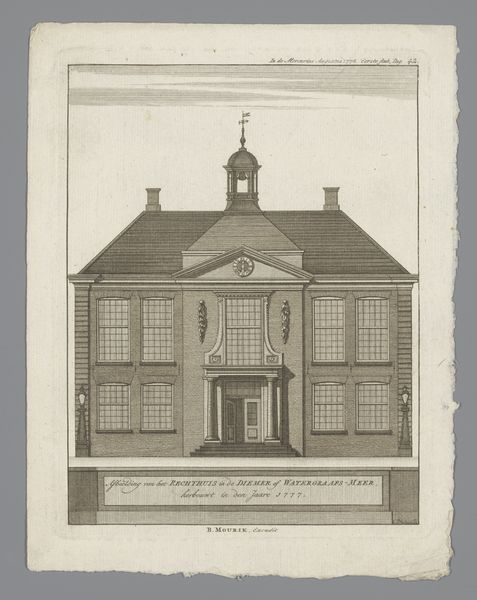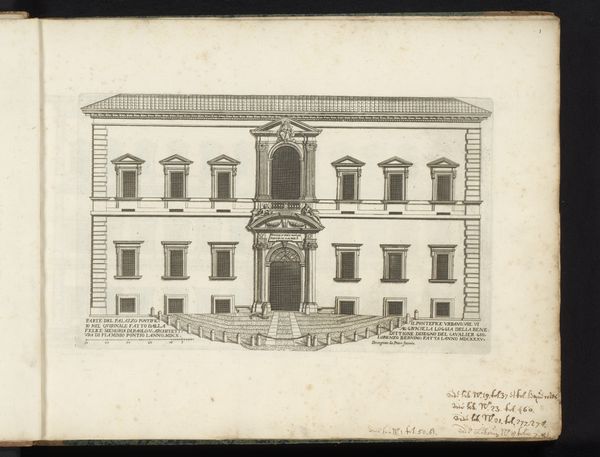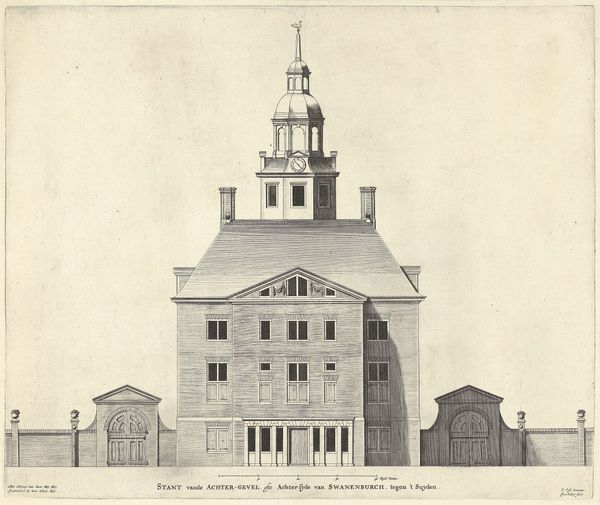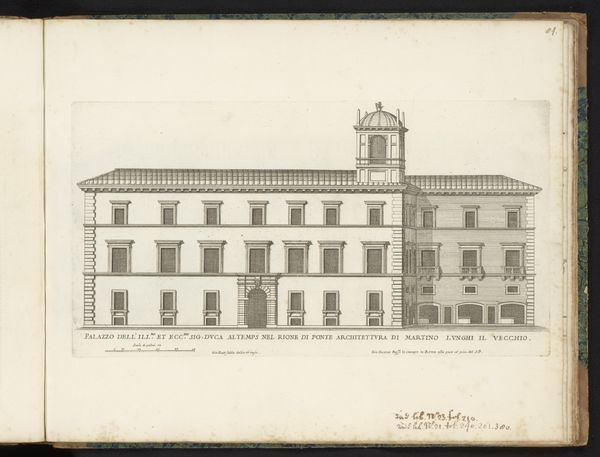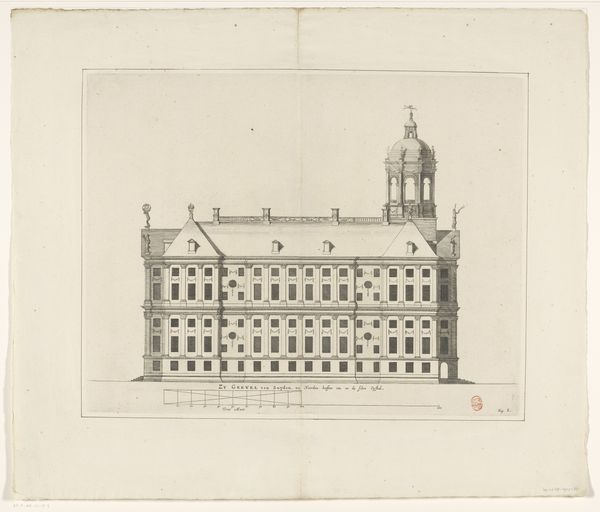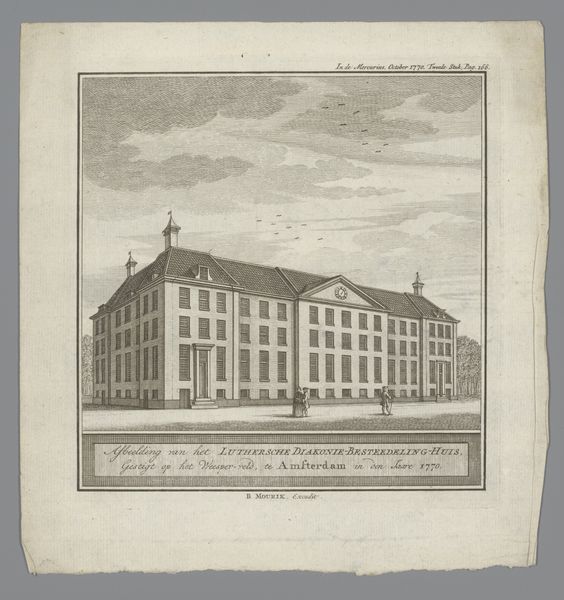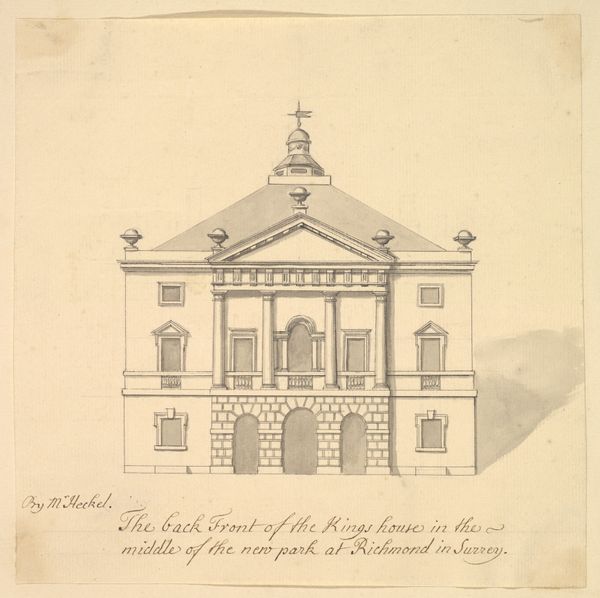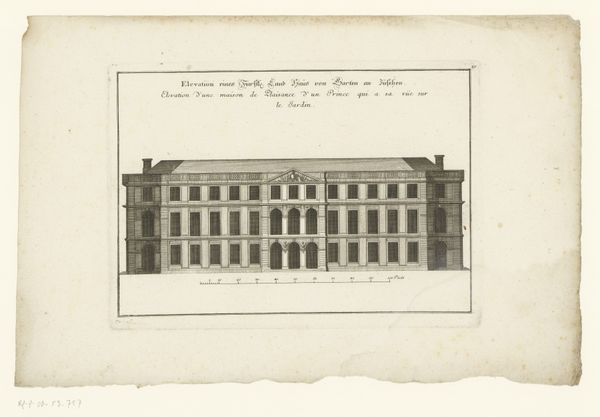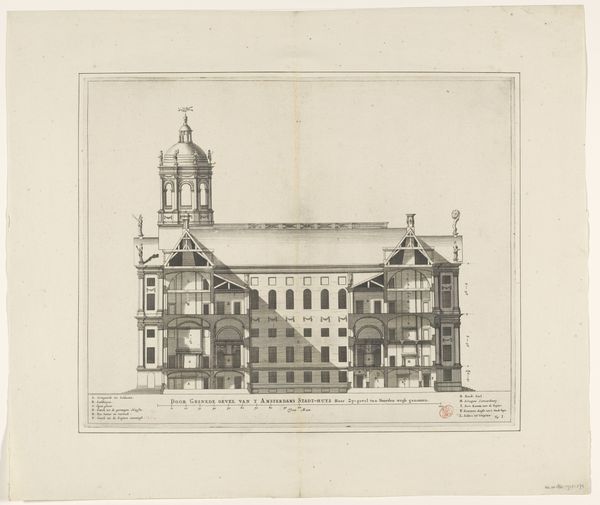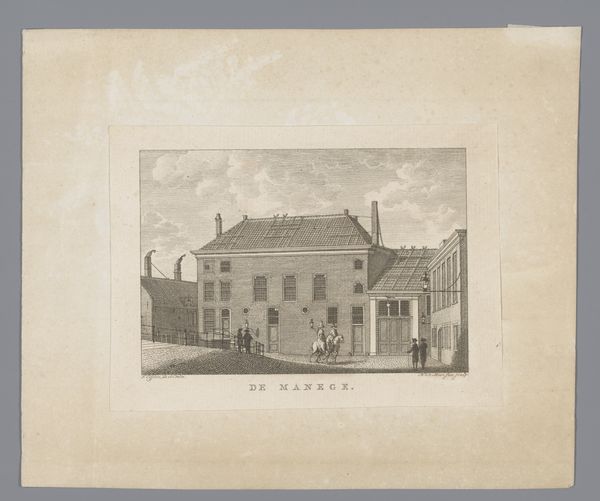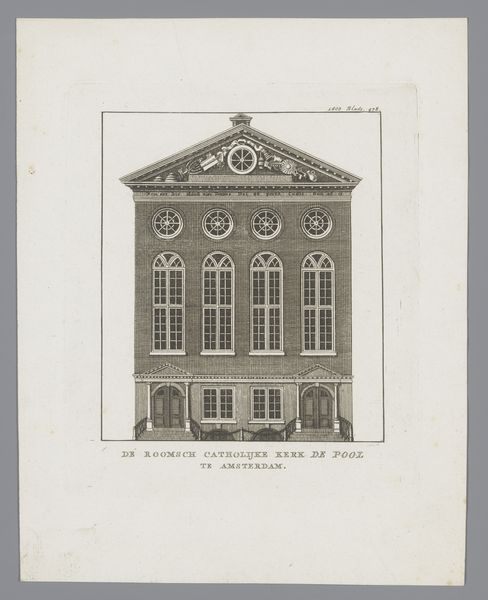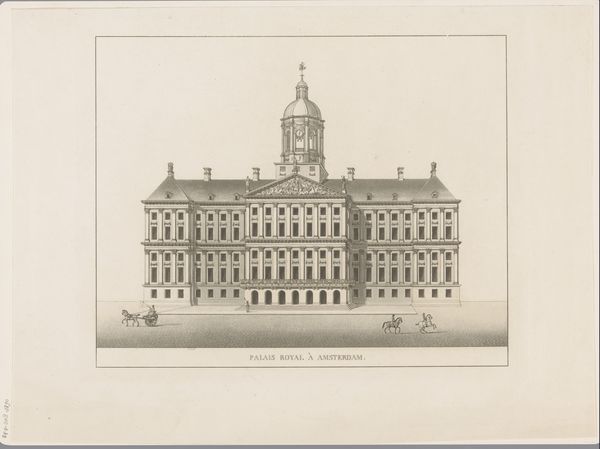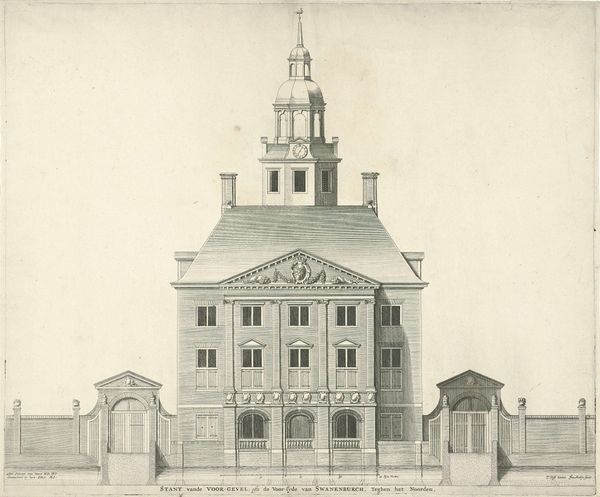
drawing, etching, paper, architecture
#
drawing
#
dutch-golden-age
#
etching
#
paper
#
geometric
#
cityscape
#
architecture
Dimensions: height 159 mm, width 213 mm
Copyright: Rijks Museum: Open Domain
Curator: We’re now looking at "Stadhuis te Leeuwarden," an etching and drawing on paper, crafted around 1720 by Jacobus Harrewijn, which resides here at the Rijksmuseum. Editor: My first impression is how formal and symmetrical the composition feels. It’s as if Harrewijn is presenting the viewer with a statement of civic pride and order, or maybe control? Curator: Absolutely. Notice how Harrewijn uses meticulous detail to render the architectural structure. The facade is regimented, articulated by a series of windows and classical motifs that speak to principles of rational design during the Dutch Golden Age. There is a distinct visual grammar at work here. Editor: But what does this order really signify? This was a time of immense social stratification and colonial ambition for the Dutch Republic. By presenting this imposing building with almost clinical precision, isn’t Harrewijn also suggesting the dominance of a certain elite? How does this seat of power engage with or perhaps exclude, marginalized populations? Curator: I acknowledge that critique. Yet, it is through an analysis of form –the balance, the use of perspective – that we understand Harrewijn’s mastery. Consider the subtle variations in line weight to suggest depth and texture. These are not merely neutral choices; they actively construct our understanding of the building's presence. The perfect proportions echo classical ideals of beauty and social harmony, even if that harmony was idealized. Editor: I agree about the formal skill, but art does more than reflect aesthetics. Buildings, like this city hall, were spaces where the drama of daily life played out. We can’t separate the image of this architecture from its role in upholding a specific social order that dispossessed people of color globally and at home. Curator: It’s clear we view this piece through very different lenses. Still, focusing on the artistic methods alongside its socio-historical role creates a richer and, potentially more troubling, perspective on the work itself. Editor: Precisely, and grappling with these tensions enriches our understanding of Dutch art. It allows us to see how even seemingly neutral cityscapes like this one are enmeshed with broader systems of power.
Comments
No comments
Be the first to comment and join the conversation on the ultimate creative platform.
